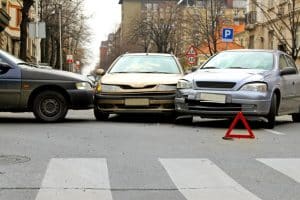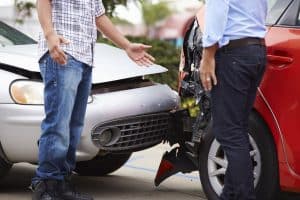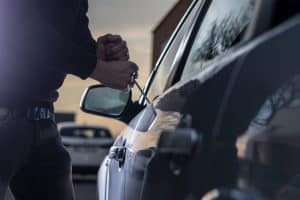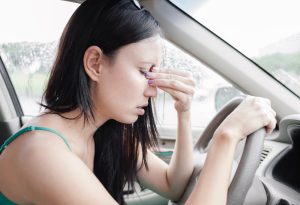Home > Car Insurance > Car Insurance for Hail Damage
Car Insurance for Hail Damage
Explore car insurance cover for hail damage to your vehicle, both new and pre-existing.
Author
Savvy Editorial TeamFact checked

Hailstorms aren't uncommon in Australia, particularly during the warmer months and in certain regions, and hailstones can cause substantial damage to vehicles. This can range from denting the exterior of your vehicle to breaking windows and lights, which can be expensive to fix, so it’s important to consider whether your car insurance covers hail damage. If it doesn't, you can compare a range of policies online to find one that meets your needs.
Can hail damage be covered by my car insurance policy?
Yes – hail damage is typically covered by comprehensive car insurance. While third party property damage (TPPD) insurance can cover you for damage you cause to other people’s property, it doesn't usually cover you for damage to your own car. Likewise, third party fire and theft (TPFT) insurance, which can cover damage to your car caused by theft or fire, won’t cover hail damage.
Comprehensive car insurance, however, can protect your vehicle against a range of covered non-collision incidents, including hail damage and certain other adverse weather-related events, thefts and natural disasters. It may also provide optional extras such as roadside assistance.
With hail damage cover generally included as standard, comprehensive coverage can help pay for the repair or replacement of your vehicle if it sustains hail damage. However, it’s important to review your specific insurance policy to confirm the coverage details and any applicable excesses or limitations.
Can I get car insurance cover with pre-existing hail damage?
Pre-existing hail damage refers to damage which occurred before obtaining car insurance. Most insurers won’t cover pre-existing damage, as policies are designed to protect against events and risks which occur after the policy is in place.
If a car’s exterior is already damaged, it can be difficult to determine any additional damage going forward. If the damage is too severe, you will likely be refused cover. However, some insurers may offer market value insurance if the car is roadworthy and in a registrable condition, or cover at an increased rate. Some may only offer third party cover, such as TPPD insurance, while others may not cover your vehicle at all if its hail damage is severe enough.
If you do have any pre-existing damage, it’s important to disclose it to the insurance company when applying for coverage. Failing to do so may result in complications or potential issues with future claims.
If your car is found to be roadworthy despite the damage and an insurance provider agrees to comprehensive insurance cover, it should be covered for future hail damage.
Types of car insurance you can choose from
The most basic type of optional cover available, TPPD insurance can offer protection for damage caused by your vehicle to other people's property. However, no damage to your vehicle will be covered.
A step up from TPPD, TPFT insurance can also cover damage to your vehicle sustained due to a fire or theft (or attempted theft) in addition to third-party property damage if you're in an at-fault accident.
The most extensive (and expensive) form of cover, comprehensive car insurance can also offer cover for damage to your vehicle in an accident, collision and certain weather events on top of the areas TPFT covers.
How to make a car insurance claim for hail damage
Document the damage
Take photos of any hail damage to your vehicle, as well as the surrounding area. Capture clear images from multiple angles to provide a comprehensive view of the extent of the damage and note down what happened, when and where. This will all serve as evidence when filing your claim.
Get in touch with your insurer
You should contact your insurance company as soon as possible to begin the claims process. You’ll need to inform them about the hail damage to your car and provide all the necessary information about the incident.
Cooperate with your insurer
As well as providing the detailed evidence you collected about the car damage, you may also need to meet with experts or claims assessors assigned by your insurance company. Hold off on any repairs until your insurer gives the green light.
Submit your claim
When you are ready, you can submit your claim. This can typically be done online, but some insurers may enable you to do this via email, by post or in person.
Wait for your insurer’s response
Once you’ve lodged your claim, your insurer must respond within ten business days with their decision or to let you know that they need more time. If they do need more time, they must let you know what else they require and provide updates on your claim.
Frequently asked questions about car insurance for hail damage
This depends on the severity of the damage and the safety of the vehicle. If the hail damage is minor, such as small dents or cosmetic issues, it may still be safe to drive the car. However, if the damage is more extensive and affects important structural components or essential parts of the vehicle, it may not be roadworthy until repairs are made. In some cases, your insurer may even deem the car a write-off. You should assess if the hail damage has compromised the car’s structural integrity, windows, lights or any other critical components.
If you're unsure whether your vehicle is roadworthy, it's worth having hail-damaged vehicles inspected by a professional auto body technician or mechanic. They can assess the extent of the damage, provide an expert opinion on the vehicle’s safety and recommend any necessary repairs.
As with many car insurance claims, you'll probably have to pay an excess to make a claim for hail damage. The cost of your excess will depend on your insurance provider and your policy conditions, as you’ll be required to set your excess when taking out your policy.
A comprehensive car insurance policy can also cover you for other weather-related damage caused by storms. In addition to hail, storm damage can include:
- Rainwater, such as overflow from storm drains
- Runoff, such as tanks overflowing due to excess rainwater
- Thunderstorms
- Lightning
- Snow
Many areas of Australia are prone to hailstorms, such as southeast Queensland, New South Wales and Victoria. There are several steps you can take to safeguard your vehicle against potential hail damage, including:
- Covered parking: parking your car in a covered area, such as a garage, provides the best protection by shielding your vehicle from falling hailstones.
- Using car covers, blankets or mats: thick, padded materials can help absorb the impact of hailstones and minimise damage to your vehicle.
- Checking the weather forecast: this will help you anticipate and prepare for potential hailstorms, allowing you to take proactive steps to protect your car, such as parking in a covered area or changing your travel plans to avoid the storm.
Helpful guides on car insurance
Compare car insurance policies with Compare the Market
Explore car insurance options by make
Select your car make and find out how much it may cost to insure, read helpful guides and compare quotes.
Disclaimer:
Savvy (ABN 78 660 493 194, ACR 541 339) provides readers with a variety of car insurance policies to compare. Savvy earns a commission from our partnered insurers each time a customer buys a car insurance policy via our website. All purchases are conducted via our partners’ websites. The integrity of our comparison service is unaffected by our partnerships with those businesses and our effort remains to bring further brands that do not already use our comparison service onboard.
Savvy’s comparison service includes selected products from a panel of trusted insurers and does not compare all products in the market. Any advice presented above or on other pages is general in nature and doesn’t consider your personal or business objectives, needs or finances. It’s always important to consider whether advice is suitable for you before purchasing an insurance policy. We always recommend readers to consult the Product Disclosure Statement (PDS) of different policies before purchasing your car insurance.










